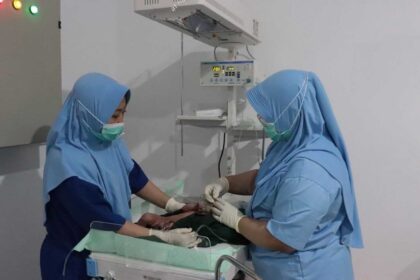
An Infant Radiant Warmer is a medical device used to maintain the body temperature of newborns, especially preterm or critically ill infants, who may have difficulty regulating their own temperature. These devices provide a controlled environment that ensures the infant remains warm while allowing easy access for medical interventions.
Purpose and Importance
Thermoregulation: Newborns, particularly preterm infants, have underdeveloped thermoregulation mechanisms. Radiant warmers help maintain normothermia (normal body temperature) to prevent hypothermia or hyperthermia.
Ease of Access: Unlike incubators, radiant warmers provide open access, allowing healthcare providers to perform resuscitation, examinations, or procedures without disturbing the thermal environment.
Reducing Morbidity and Mortality: Proper thermal management reduces the risk of complications such as metabolic acidosis, hypoglycemia, respiratory distress, and increased mortality rates.
Components of an Infant Radiant Warmer
Radiant Heating Element:
- Positioned above the infant, this element emits infrared radiation to warm the baby directly.
- Common materials include quartz or ceramic heaters.
Control Panel/Interface:
- Allows healthcare providers to set and adjust temperature settings.
- Displays vital information like the infant’s temperature, heater output, and alarms.
Temperature Sensors:
- Skin probes placed on the infant’s body measure temperature and provide feedback to the warmer.
- Ensures automatic adjustments to maintain the set temperature.
Mattress or Bed Surface:
- Designed for comfort and easy cleaning.
- Some models include heated mattresses for additional warmth.
Overhead Light/Phototherapy Unit:
- Provides additional lighting for procedures or phototherapy for jaundiced infants.
Alarm Systems:
- Alerts healthcare providers in cases of temperature deviations, equipment failure, or probe dislodgement.
Adjustable Height and Mobility:
- Most units are height-adjustable and mounted on wheels for portability within neonatal units.
Modes of Operation
Manual Mode:
- The caregiver sets a fixed heater output regardless of the infant’s temperature.
Servo-Controlled Mode:
- The radiant warmer automatically adjusts the heat output based on continuous feedback from the infant’s skin temperature sensor to maintain the desired temperature.
Pre-Warm Mode:
- Used to warm the bed surface before placing the infant.
Indications for Use
Neonatal Resuscitation:
- Provides a warm environment immediately after birth, especially in delivery rooms.
Premature Infants:
- Preterm babies lack sufficient body fat and skin development, making them prone to rapid heat loss.
Surgical or Medical Procedures:
- Ensures the infant remains warm during open access procedures like intubation, IV placement, or minor surgeries.
Jaundice Treatment:
- Used in conjunction with phototherapy units for treating neonatal jaundice.
Advantages
Immediate Access:
- Open design allows for immediate medical interventions without compromising thermal regulation.
Continuous Monitoring:
- Real-time temperature feedback and alarms ensure the infant remains within a safe thermal range.
Versatility:
- Can be used in delivery rooms, NICUs (Neonatal Intensive Care Units), and operating rooms.
Disadvantages and Risks
Heat Loss from Other Areas:
- While the radiant warmer keeps the infant’s skin warm, heat can still be lost from uncovered areas, especially the head.
Risk of Hyperthermia:
- If the temperature sensors are dislodged or malfunction, there’s a risk of overheating.
Dehydration:
- Open systems can increase insensible water loss compared to closed incubators.
Limited Humidity Control:
- Unlike incubators, radiant warmers do not typically provide humidity, which can affect skin integrity in preterm infants.
Maintenance and Safety Precautions
Regular Calibration and Testing:
- Ensures accurate temperature readings and reliable performance.
Proper Sensor Placement:
- Incorrect placement of skin probes can result in inaccurate temperature monitoring and inappropriate heating.
Avoiding Direct Overheating:
- The warmer should not be too close to the infant to prevent burns or overheating.
Hygiene and Cleaning:
- Regular disinfection to prevent infections, as the open design exposes the infant to the environment.
Technological Advancements
Integrated Monitoring Systems:
- Some advanced warmers integrate vital signs monitoring (heart rate, oxygen saturation) for comprehensive care.
Automatic Weighing Scales:
- Built-in scales allow for continuous weight monitoring without moving the infant.
Touchscreen Interfaces:
- User-friendly interfaces for easier control and monitoring.
Conclusion
Infant Radiant Warmers are vital in neonatal care, providing essential thermal support to vulnerable newborns. Their open design, combined with precise temperature control, allows for immediate medical intervention while maintaining a stable environment. Proper use, regular maintenance, and continuous monitoring are critical to ensuring the safety and effectiveness of these devices in clinical settings.